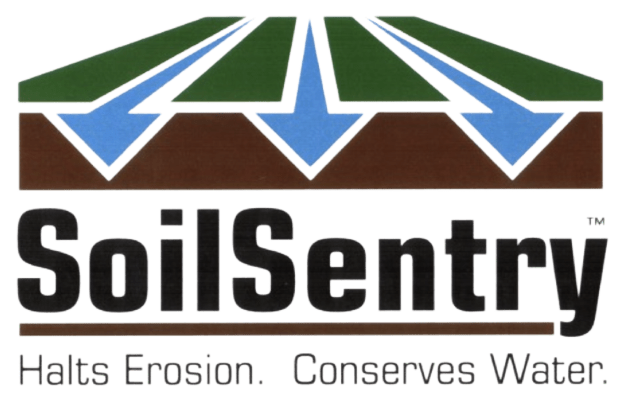The Clear Solution With SoilSentry™
In many semi-arid areas, irrigation is a must for viable farmland. But it can also contribute to serious erosion problems which can affect crop stand, uniformity and yield. Whether you use sprinkler or furrow irrigation, as water is applied to the field, soil becomes suspended in the water impacting infiltration, and this can cause a myriad of erosion-induced and costly-to-fix problems. In addition, soil migration and loss can strip topsoil from your field, ultimately affecting soil fertility. Worst of all, it takes up to 100 years to replenish just 1/4” of topsoil! But now there’s a convenient and affordable way to stand guard against soil erosion problems which can affect crop stand, uniformity and ultimately yield—while protecting one of nature’s most precious resources.
The Clear Solution to Your Water Sustainability and Erosion Problems
Features
Benefits
Features
Benefits
How it Works: In Gravity Irrigation Systems
How it Works: Gravity Irrigation
Technical Information
The Clear Solution
In many semi-arid areas, irrigation is a must for viable farmland. But it can also contribute to serious erosion problems which can affect crop stand, uniformity and yield. Whether you use sprinkler or furrow irrigation, as water is applied to the field, soil becomes suspended in the water impacting infiltration, and this can cause a myriad of erosion-induced and costly-to-fix problems. In addition, soil migration and loss can strip topsoil from your field, ultimately affecting soil fertility. Worst of all, it takes up to 100 years to replenish just 1/4” of topsoil! But now there’s a convenient and affordable way to stand guard against soil erosion problems which can affect crop stand, uniformity and ultimately yield—while protecting one of nature’s most precious resources.
Application
Spray Irrigation: Add by injection
Gravity Irrigation: Add via battery box in head ditch
Fields with slope of 2% or less: 10 gallons of SoilSentry per acre. Refer to label for specific rate information.
Fields with slope greater than 2%: 10 to 30 gallons of SoilSentry per acre based on soil type, slope severity, and rate of water application.
